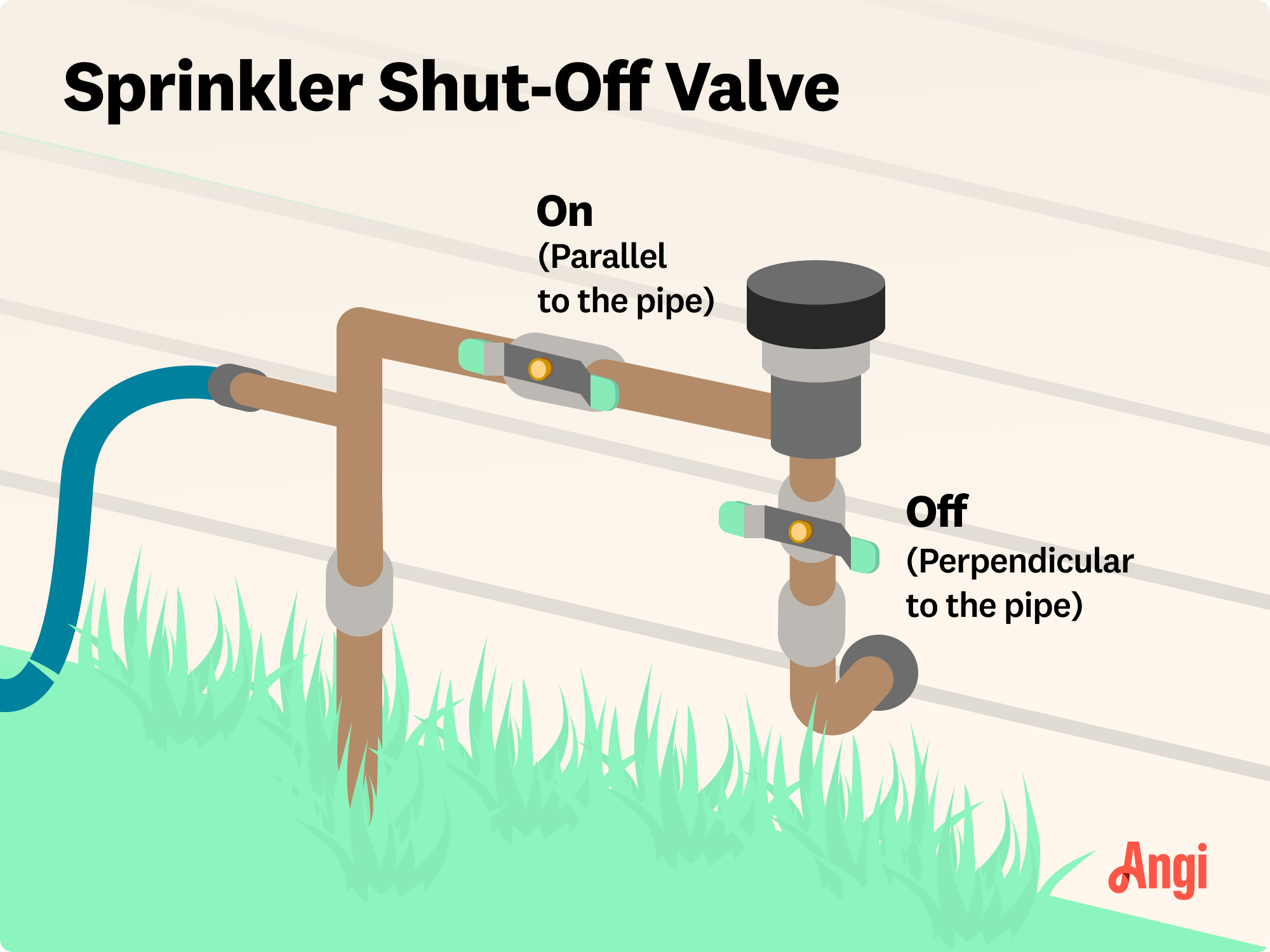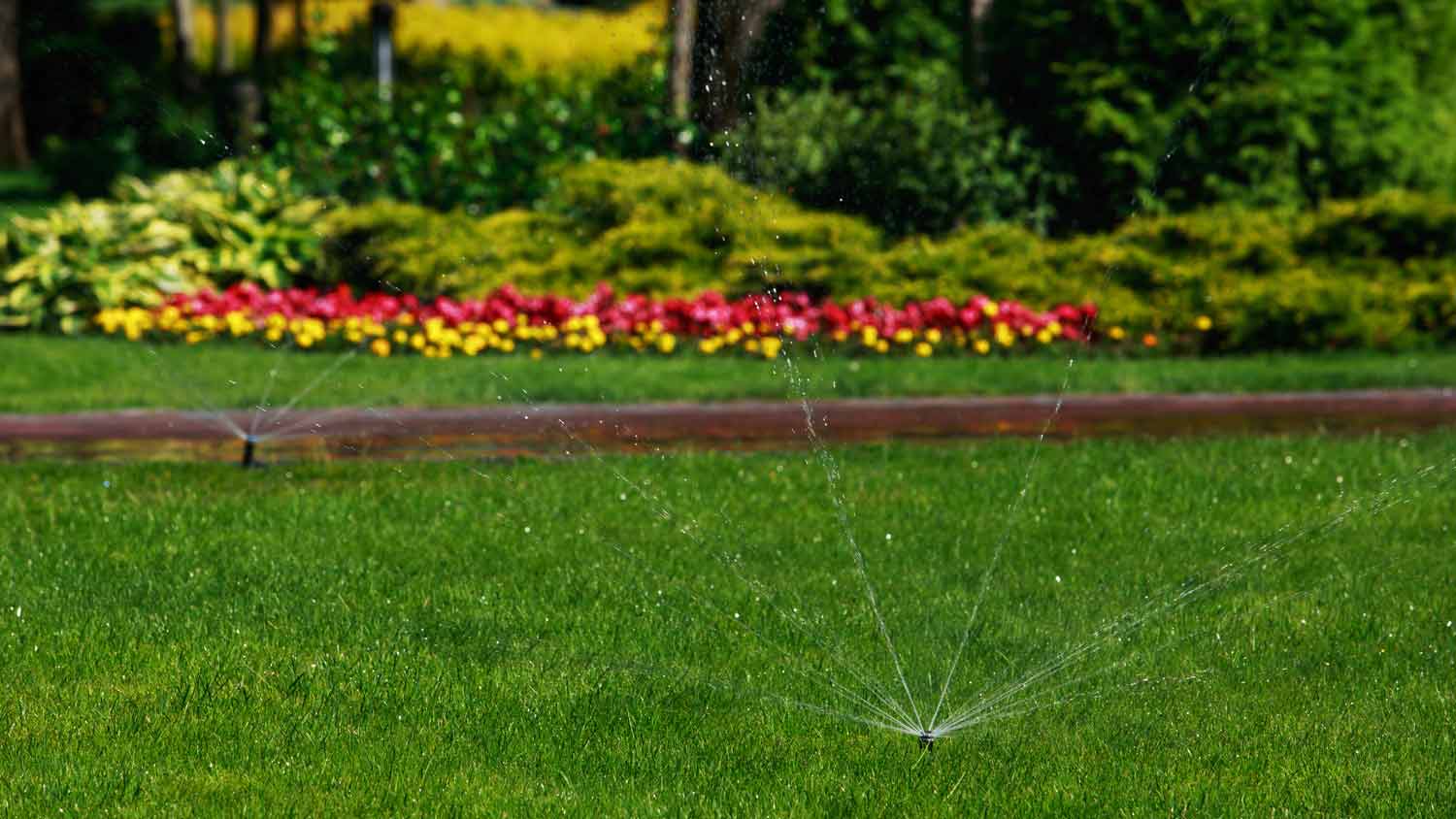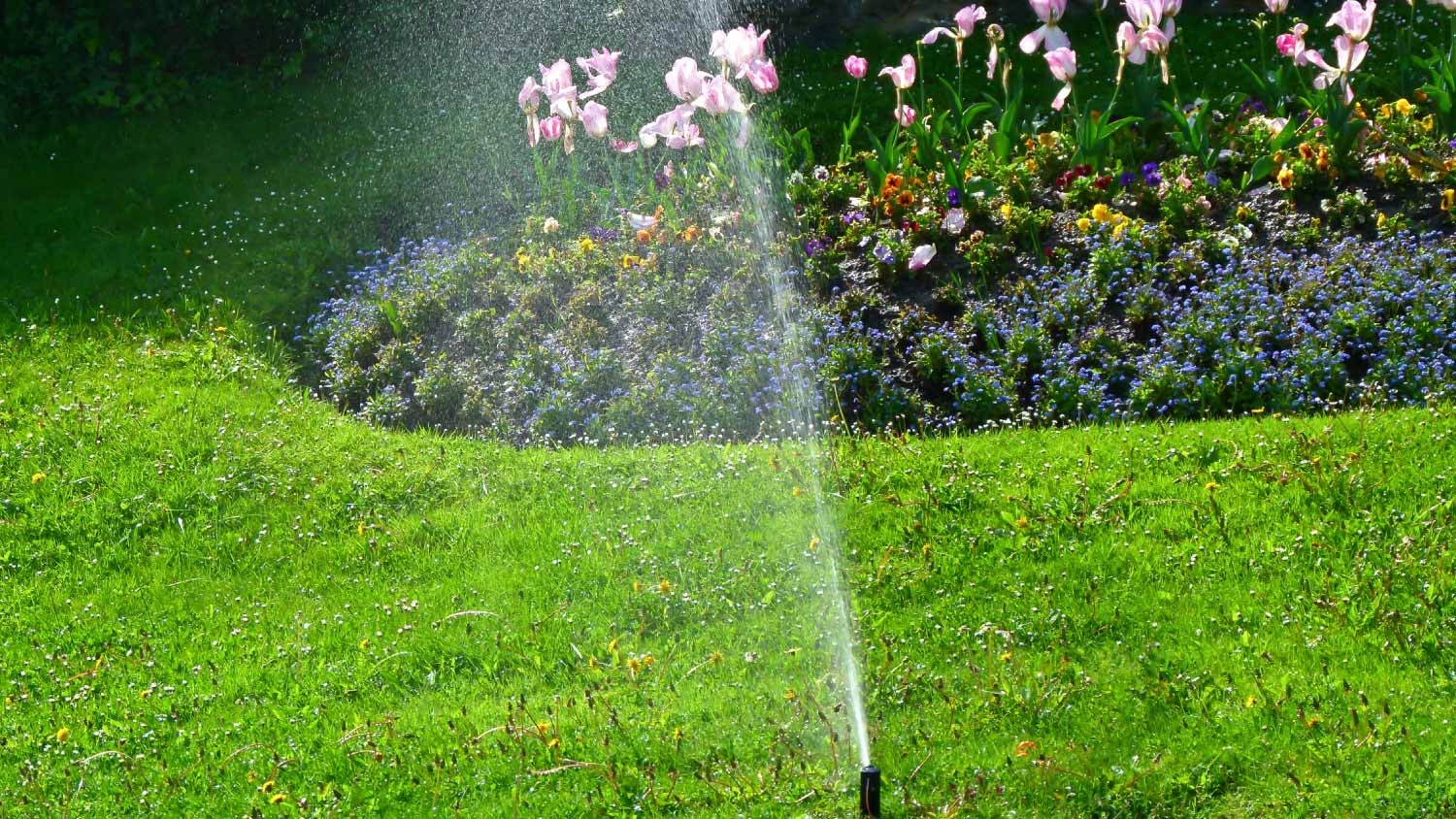What to Do if Your Sprinklers Won't Turn Off
If your yard is looking more like a bog than a garden, try one of these steps to troubleshoot why your sprinklers won't turn off


That time-saving sprinkler system you’ve installed is a life-saver for keeping your garden looking lush, but a broken irrigation system can quickly cause problems in your backyard paradise. Use this guide’s irrigation tips to find out what to do if your sprinklers won’t turn off.
How a Sprinkler Irrigation System Works
Whether you have an irrigation system installed by local sprinkler installation professionals or you did it yourself, the basic components are the same. All automatic irrigation systems have:
Sprinkler heads: Visible parts of a sprinkler system that usually pop up on your lawn
Main and zone lines: Underground pipes that distribute water
The controller: A tool that opens and closes the valves of each zone to let water through, programmed on timers and set to specific watering schedules
Shut-off valve: A valve that stops the water from going to any part of the irrigation system
A backflow preventer: An instrument that keeps water from going back into the water supply
What to Do If Your Sprinklers Won’t Turn Off
If your system is on the fritz, don’t panic. While you may need to hire a professional, you can try a few steps to troubleshoot why your sprinklers won’t turn off first.
1. Check the Main Shut-Off Valve

If you shut the valve off and the sprinklers are still going, that means your valve is faulty. There could be debris in the valve, or it may not be closing properly. You’ll need to replace it.
2. Check the Backflow Preventer
The backflow preventer is another way to shut the system off. Locate your backflow preventer by looking for a green box, most often found near the water meter on your property.
If you have a gate valve, turn the lever clockwise. It looks like a faucet.
If you have a T-shaped ball valve, turn the handle clockwise to shut it off.
If your sprinklers still don’t turn off or your backflow preventer is leaking, you may need to repair it or replace it.
3. Check the Controller
If the water stops flowing from your sprinklers after using the shut-off valve, move on to the controller.
Is the controller display blank? Use the reset button to restart it. Note that you may need a fine point like a needle or paper clip to hit the reset button.
Hold down the controller reset button until you see the screen come back on.
Check the batteries: You may just need to replace them.
If the controller screen isn’t blank, check the zones. Do you have it set to auto? If not, it won’t come on (or off) automatically.
Check the times you have the controller set for—make sure you see specific watering times. If you don’t, you should set them.
If the controller seems fine, it’s probably not a controller issue causing your sprinklers to keep running.
What to Do if One of Your Sprinkler Zones Won’t Shut Off

If it appears to be one specific sprinkler zone that won’t turn off, you can do a few things to troubleshoot.
Check the controller’s timer for that zone. It could have been programmed incorrectly.
Check the specific sprinkler head valve.
Turn the system water supply off and examine the sprinkler zone’s irrigation valve.
Check for debris or dirt in the valve; clean out the valve.
If cleaning the valve doesn’t work, it could be the solenoid—the mechanism that houses the valve’s diaphragm. You may need to replace the irrigation valve’s diaphragm.
If you’ve tried all of the above and can’t seem to get your irrigation system to work, contact a local sprinkler repair professional to come and troubleshoot for you.





- Where Can I Find My Irrigation Shut-Off Valve’s Location?
- How Irrigation Systems Work to Make Sure Your Lawn Is Happy and Healthy
- Sprinklers 101: The Key Parts of the Sprinkler System
- How Do Irrigation Valves Work? Everything You Need to Know
- How To Troubleshoot a Sprinkler System
- How to Find Irrigation Valves When It’s Time for Maintenance
- Spray Irrigation Pros and Cons: A Complete Guide
- Who Do I Hire to Turn on My Sprinkler System After Winter?
- How to Clean a Sprinkler Valve: Step-by-Step Instructions
- How to Build a DIY Sprinkler System and Water Your Whole Yard at Once















